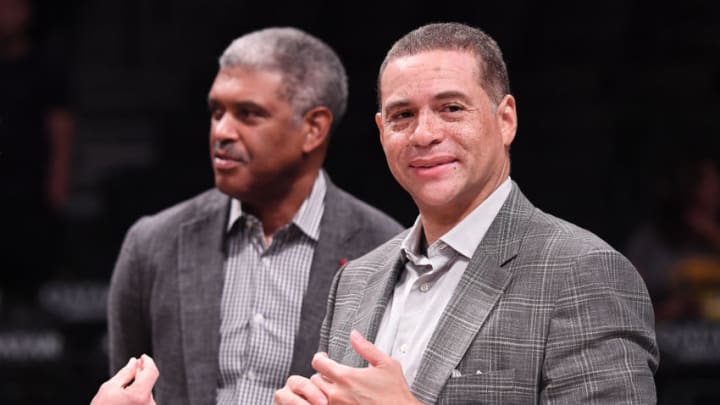In the second part of this New York Knicks Offseason Roundtable, the Daily Knicks staff looked at if the team made proper use of their high cap space.
The ongoing roundtable series on Daily Knicks looks at if the New York Knicks made proper use of their cap space, which reached approximately $70 million before free agency began. Did it work out okay in the end?
Jayson Kleinman: I think they could have made a play at some more young prospects, maybe Rondae-Hollis Jefferson or somebody like that. But I think that hitting the cap minimum and signing a combo of trade-bait veterans and young prospects was the best way for the Knicks to use their cap space after the big-names fell through.
Matt Budkofsky: At the end of the day I believe they did. Once Plan A fell apart, the Knicks pivoted to signing multiple, solid role players to team-friendly deals that set up nicely for the next potentially stacked free-agent class of 2021. It’s definitely not the haul the Knicks dreamt of, but right now the team is set up nicely for the future.
Teresa Powe: Even before Kevin Durant’s decision was announced, Steve Mills and Scott Perry were on their way to Los Angeles where they began their Plan B in the re-building process. Young players, Julius Randle, Elfrid Payton, Bobby Portis, Reggie Bullock (contract re-negotiated due to health reasons); veterans Marcus Morris, Taj Gibson and Wayne Ellington all bring a defensive toughness that Coach David Fizdale likes. The best part of the signings was that all contracts except Randle’s were two years with the team and not the players, having an option for the second year.
More from Free Agency
- 5 Best free agents Knicks could target in 2024
- Knicks predicted to pursue another Warriors free agent after losing Obi Toppin
- Grading the New York Knicks’ free agency signing of Donte DiVincenzo
- 3 Knicks players that will benefit from Donte DiVincenzo free agency signing
- Knicks create three-headed Villanova monster with free agency signing
Anirudh Subramanian: Yeah, the Knicks did a good job using their cap space. They filled the roster with talent at every position, which puts less pressure on the young guys to perform right away. Also, they finally added some shooting with Ellington and Bullock.
Michael Petreski: Although I believe the offseason was a bit of a bust, I think they managed their money in the best possible way. No star was coming our way and the only thing worse would’ve been if we handed out two massive contracts to players of lesser quality. Although I’m not a fan of every singing the Knicks made, I think the contracts are team-friendly, most can be traded and I believe all can end within the next two years.
Rhys Smith: Almost. They get a checkmark in my book for giving out short-term deals to quality players who will help them be more competitive in the near future while maintaining cap flexibility for the next two offseasons. The only big miss is the opportunity to take on bad contracts in exchange for assets (draft picks and young players) like the Memphis Grizzlies have done. They could have carved out some of their cap space for continuing to build their young core via draft picks and young prospects while still signing some guys to help them be more competitive right now.
Eric Gonzalez: The Knicks filled their roster with a mix of young players, who have potential to be stars and veterans, who have been apart of winning cultures and great in the locker room and “tough” on the court. It’s a good way to give your young core someone to go to when they need advice or face adversity.
Rob Wolkenbrod: For missing out on stars, yes, the Knicks made fine use of their cap space. They improved the roster and kept payroll flexibility for the next two years, potentially with future available stars on the front office’s mind. They could have used some of that money to acquire draft picks for another team’s bad contract, but the two first-round selections from the Dallas Mavericks and all their own picks being in place is still good.
